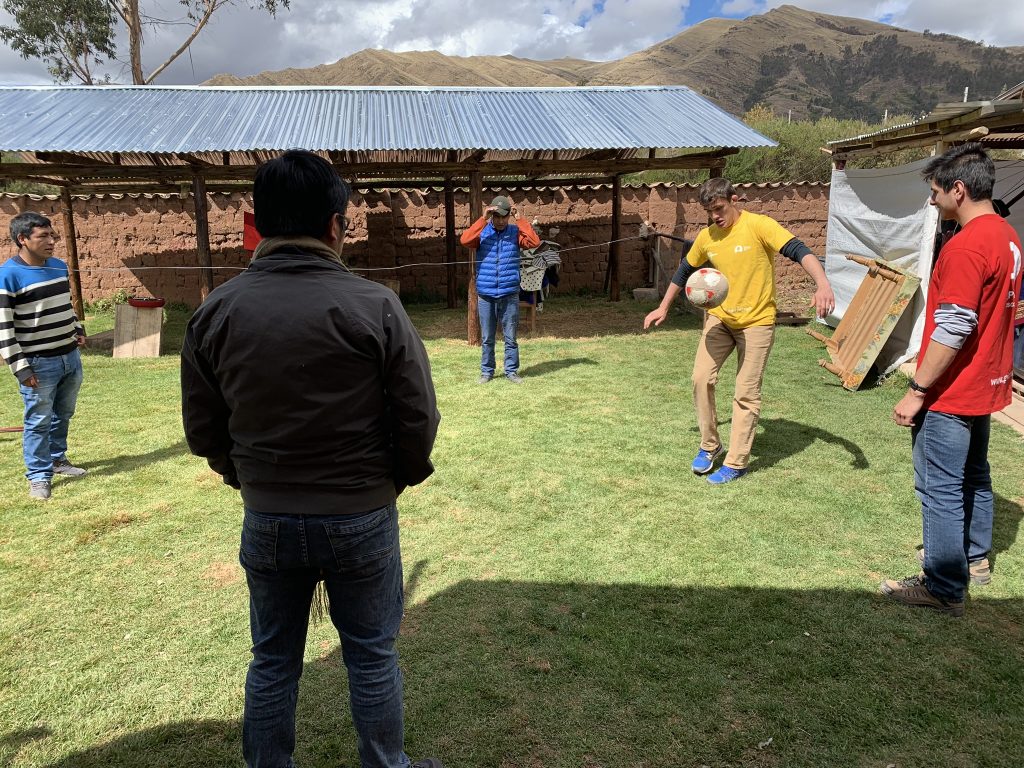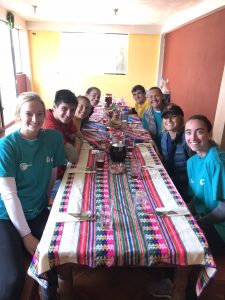
Through interactions with both CBC and the Pongobamba community during our first week, we experienced firsthand different aspects of their culture. As a team, we attended a CBC water presentation, worked with community members to improve terraces for a greenhouse, learned about local textiles, were invited to lunch with community members, and joined a soccer game.
GVI’s community partner, Casa Campesina (CBC), kindly hosted a water workshop for us. The woman who led us in the water presentation not only educated us about the community we are working with, Pongobamba, but also Lake Piuray and its significance. Lake Piuray is not large, yet gallons and gallons of water are being taken out of the microbasin to provide water to the millions of people that live in Cusco and the community of Pongobamba. The rate at which water is taken out of the lake compared to the size and water quantity of the lake is not sustainable for the future generations or tourists of Cusco. We are working with the community of Pongobamba to help promote environmental conservation of both water and land to the children and other community members with resources that the community already and will continue to have in order to sustain the projects long term. For example, this past week we worked with the community to complete the greenhouse project and played games with the children of Pongobamba to test them on their superior knowledge of environmental sustainability.

After one lunch in the community, a few women from Pongobamba demonstrated their natural techniques for cleaning alpaca wool, spinning the thread, dying the material, and weaving textiles. During their demonstration, the women explained that their traditional textile patterns aren’t written down but actually are passed down to each generation of women in the community through practice and verbal instruction. Not only do these patterns create beautiful textiles, but they represent the deep history and culture of the community. For example, zig zags and triangle shapes are involved in many of the patterns because they represent the Andes mountains. The natural colors of the textiles also have deep meaning that tie into the surrounding landscape. The women shared how time intensive the weaving is. For example, a table runner take a full two months to complete, working six hours per day. The unique textiles are not just beautiful works, but are a way of passing down the history of Pongobamba.

